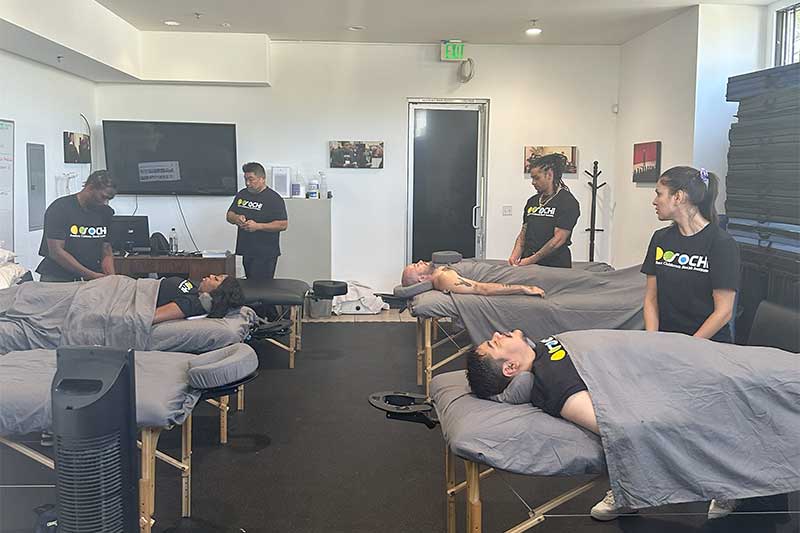Learn exactly what high-intensity interval training (HIIT) is, how it can help you reach your fitness goals, and the best exercises to try out.
Fitness trends come and go, but high-intensity interval training or HIIT has proven itself to be a mainstay in the world of fitness. HIIT is a form of exercise that involves short bursts of intense cardio or strength-training exercises, followed by brief periods of rest or active recovery.
What Is High-Intensity Interval Training and Why Is It So Effective?
HIIT has been touted for its effectiveness in burning calories, building muscle, and improving overall fitness. But what exactly is HIIT, and why is it so effective? Let’s delve deeper into this popular fitness phenomenon.
1. The Science Behind HIIT
HIIT targets the anaerobic energy system, responsible for short bursts of intense activity such as sprinting or weightlifting. By engaging this energy system, HIIT helps improve the body’s ability to produce energy quickly and efficiently. This translates to better endurance and improved athletic performance. Moreover, HIIT has increased the body’s metabolism, leading to greater calorie burn even after the workout.
2. Versatility and Convenience
HIIT can be done in a variety of settings, making it a versatile and convenient workout option. Whether you’re at the gym, at home, or outdoors, HIIT can be adapted to suit your preferences and needs. Additionally, HIIT workouts are typically shorter in duration than traditional workouts, making them ideal for those with busy schedules who still want to see results. HIIT can even be incorporated into everyday activities such as running up stairs or doing bodyweight exercises during commercial breaks.
3. Sample HIIT Workout
A sample HIIT workout might involve performing a series of exercises such as burpees, jump squats, and mountain climbers, each for 30 seconds with a 10-second rest in between. This sequence can be repeated several times to increase the intensity and duration of the workout. HIIT workouts can be tailored to suit different fitness levels, whether you’re a beginner or an experienced athlete.
4. Benefits Beyond Physical Fitness
In addition to improving physical fitness levels, HIIT has been shown to have several psychological benefits. Studies have found that HIIT can reduce stress, boost mood, and improve cognitive function. HIIT has also been shown to improve insulin sensitivity, which is important for individuals with type 2 diabetes. Additionally, HIIT is effective for weight loss, although it should be noted that a healthful diet is also crucial for this goal.
5. HIIT Safety Considerations
While HIIT can be an effective and convenient workout option, it’s important to take safety considerations into account. Due to the high-intensity nature of HIIT, it’s important to warm up properly and gradually increase intensity and duration over time. Additionally, individuals with underlying health conditions such as heart disease, asthma, or joint problems should consult with a healthcare professional before starting HIIT.
HIIT Workouts for Beginners
The ACSM defines HIIT training as “repeated bouts of high-intensity effort followed by varied recovery times.” What, exactly, does this mean? Typical HIIT workouts alternate five to eight minutes of intense workout periods with equivalent recovery periods. During the former, heart rates should remain between 80 and 90 percent of the maximum, while, during the latter, heart rates should drop to 40 to 50 percent.
HIIT workouts can be as short as 20 minutes and usually cap out around 60 minutes. One of the primary benefits of HIIT training is that it can be modified for anyone — regardless of current fitness level. HIIT training can also incorporate many different types of exercise, such as walking, running, cycling, and swimming.
The Research on High-Intensity Interval Training
With scientists constantly striving to learn how to help people lead healthier lives, High-Intensity Interval Training is emerging as a particularly successful form of exercise. Consider research published in the American Journal of Physical and Medical Rehabilitation, determining that a nine-month fitness program combining HIIT workouts, resistance training, and nutritional counseling was linked with fewer incidences of metabolic syndrome, reduced BMI, and decreased insulin resistance.
The research further revealed High-Intensity Interval Training to be effective at boosting resting metabolic rates — a key to accelerated weight loss. These attributes make HIIT training an invaluable tool for personal trainers aiming to help their clients achieve both fitness and weight management goals.
Conclusion:
High-intensity interval training has gained popularity due to its effectiveness in improving physical fitness, metabolic health, and psychological well-being. HIIT can be done in a variety of settings, is adaptable to different fitness levels, and has several benefits beyond physical fitness.
However, it’s important to take safety considerations into account and consult with a healthcare professional before starting HIIT. Incorporating HIIT into your fitness routine can help you achieve your fitness goals and lead a healthier, more active lifestyle.




